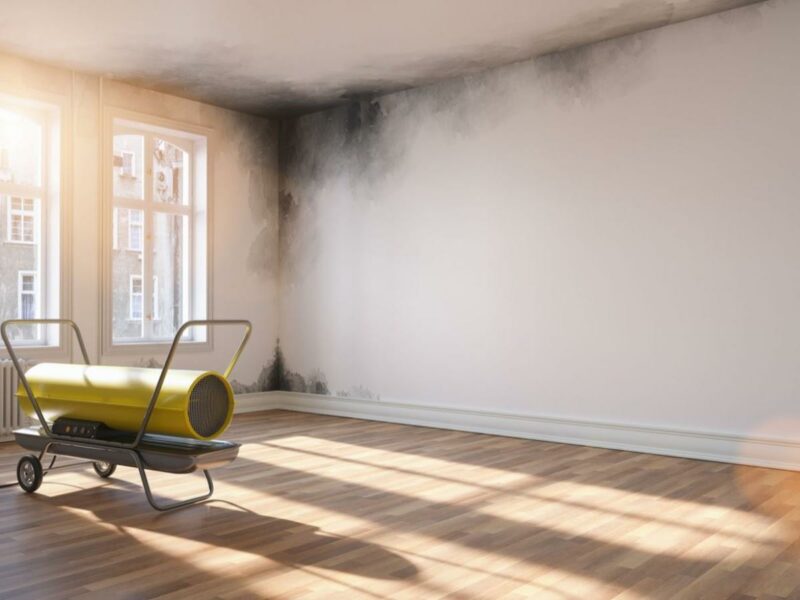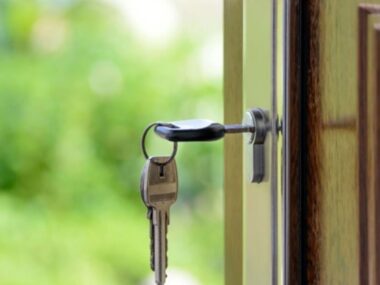Water damage in walls can lead to significant structural issues, health hazards, and costly repairs if not addressed promptly. Early signs of water damage, such as discoloration, peeling paint, damp spots, or a musty odor, should not be ignored. Identifying these signs early allows for timely intervention, helping to prevent further damage and reduce repair costs. Prompt action can mitigate risks and ensure the structural integrity and safety of your home.
Common Signs of Water Damage in Walls
Discoloration and Stains
Water Stains: Look for yellowish-brown stains on walls and ceilings, as these often indicate water seepage. These stains are a clear sign of moisture infiltration and should be addressed promptly to prevent further damage and mold growth.
Dark Spots: Unexplained dark patches or discoloration on walls can be a sign of ongoing water damage. These areas indicate moisture buildup and should be investigated promptly to prevent further structural damage and mold growth.
Peeling or Bubbling Paint/Wallpaper
Blistering Paint: Paint may start to blister or bubble due to prolonged exposure to moisture, indicating underlying water damage. This happens when water gets trapped behind the paint, causing it to lose adhesion and form bubbles. Promptly addressing the moisture source is essential to prevent further damage.
Peeling Wallpaper: Wallpaper can begin to peel away from the wall as the adhesive breaks down due to moisture exposure. This is a clear sign of water damage and indicates that the underlying wall may also be compromised. Addressing the moisture issue promptly is crucial to prevent further deterioration. If you’re replacing damaged wallpaper, learning how to install peel and stick wallpaper can help you achieve a quick and efficient update while avoiding similar issues in the future.
Warping and Buckling
Warped Walls: Walls may appear warped or bent, indicating that underlying materials have absorbed water and swollen. This deformation suggests significant water damage, requiring prompt attention to prevent further structural issues and ensure proper repairs.
Buckling Drywall: Drywall can buckle or bulge due to water saturation, compromising its structural integrity. This deformation indicates severe water damage, necessitating immediate repair to prevent further deterioration and potential safety hazards.
Mold and Mildew
Visible Mold: Green, black, or white mold spots on walls are clear indicators of water damage and moisture buildup. These mold growths pose health risks and signal ongoing water issues that need immediate attention to prevent further damage and contamination.
Musty Odor: A persistent musty smell often accompanies mold growth, signaling hidden water damage. This odor indicates the presence of moisture and mold, which requires prompt investigation and remediation to prevent health hazards and further structural damage.
Soft or Spongy Walls
Soft Spots: Walls may feel soft or spongy to the touch, indicating that the drywall or plaster has absorbed water and is deteriorating. This texture change is a clear sign of significant water damage, requiring immediate repair to restore structural integrity.
Sagging: Severe water damage can cause walls to sag or droop, posing a significant structural risk. This deformation indicates extensive compromise to the wall’s integrity, necessitating urgent repairs to prevent potential collapse and ensure safety.
Cracks and Gaps
Wall Cracks: Water can cause walls to crack, especially around windows, doors, and baseboards, as moisture weakens the structure. These cracks indicate water intrusion and can lead to further damage if not promptly addressed.
Gaps in Caulking: Cracked or deteriorating caulking can indicate moisture intrusion and potential water damage behind the walls. This compromised seal allows water to penetrate, leading to further structural issues if not promptly repaired.
Causes of Water Damage in Walls
Plumbing Leaks
Leaky or burst pipes within the walls can cause extensive water damage, often going unnoticed until significant damage has occurred.

Faulty plumbing fixtures, such as sinks, toilets, and bathtubs, can also lead to leaks that compromise the integrity of walls. These issues can result in water seepage, mold growth, and structural deterioration. Addressing these problems promptly is crucial to prevent further damage and maintain the safety and integrity of your home.
Roof Leaks
Broken or missing shingles can allow water to seep into walls, leading to significant water damage over time. Poorly installed or damaged flashing around chimneys, vents, and skylights can also cause leaks, allowing water to infiltrate the structure. These issues can result in moisture buildup, mold growth, and structural weakening. Prompt repair and proper maintenance are essential to prevent water intrusion and protect the integrity of your home.
Exterior Wall Cracks
Cracks in the foundation or exterior walls can allow water to penetrate and damage interior walls, leading to structural weakening and potential mold growth. Inadequate sealing around windows and doors can also result in water infiltration, causing moisture buildup and deterioration of the walls. These issues need to be addressed promptly to prevent extensive damage and maintain the integrity of the building. Proper sealing and foundation repairs are essential to protect against water intrusion.
Condensation
Excessive indoor humidity can cause condensation on walls, especially in poorly ventilated areas like bathrooms and basements. This persistent moisture buildup can lead to water damage, mold growth, and structural issues. Condensation often occurs on cold wall surfaces, exacerbating the problem by creating damp areas that are prone to deterioration. Proper ventilation and humidity control are essential to prevent these issues and protect the integrity of your home.
Prevention and Repair of Water Damaged Walls
Regular Inspections
Regularly inspect plumbing for leaks and repair them promptly to prevent water damage within walls. Keeping the roof in good condition and addressing any signs of wear or damage is also crucial. This proactive maintenance helps prevent water from seeping into the structure, reducing the risk of moisture buildup, mold growth, and structural deterioration. Consistent checks and timely repairs ensure the long-term integrity and safety of your home.
Improve Ventilation
Installing exhaust fans in high-moisture areas such as bathrooms and kitchens helps to remove excess humidity, preventing moisture buildup on walls. Using dehumidifiers can further reduce indoor humidity levels, particularly in basements and other damp areas. These measures help prevent condensation, which can lead to water damage, mold growth, and structural issues. Proper ventilation and humidity control are essential for maintaining a healthy and damage-free home environment.
Proper Sealing
Sealing cracks in the foundation and exterior walls is crucial to prevent water infiltration, which can lead to significant interior damage. Ensuring that windows and doors are properly sealed and weatherproofed also helps to block out moisture, preventing leaks and condensation.

These preventive measures protect your home from water damage, mold growth, and structural issues. Regular maintenance and weatherproofing are essential for maintaining the integrity and safety of your property.
Professional Assessment
For significant water damage, consulting with water damage specialists is essential to assess and repair structural issues accurately. These professionals have the expertise and equipment needed to restore your home effectively. For mold removal, hiring professionals in water damage restoration Little Elm TX ensures thorough cleaning and prevents health risks associated with mold exposure. Professional mold remediation eliminates mold spores and helps prevent future infestations, safeguarding both your property and health.
Conclusion
Recognizing the signs of water damage in walls is crucial for maintaining the structural integrity and health of your home. Early detection of issues such as discoloration, mold growth, and warping can prevent more severe damage and costly repairs. Regular inspections and prompt maintenance are essential to address any signs of water intrusion effectively. By taking proactive measures, you can protect your property from the detrimental effects of water damage and ensure a safe, healthy living environment.





